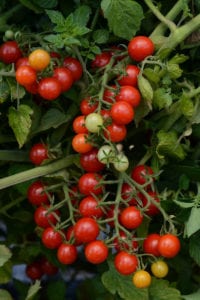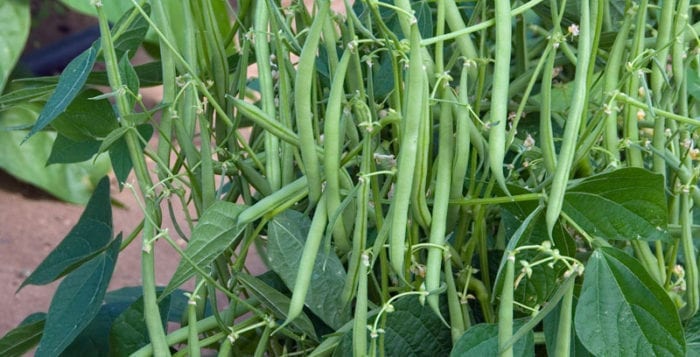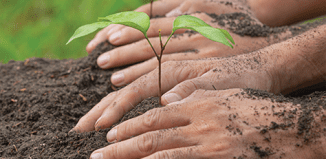It’s time to plant your summer veggies
By Ellen Barcel
Well, Mother’s Day has come and gone, a heads up that it’s time to start planting your more tender veggies. Plants that fall under this category include corn, tomatoes, certain herbs, beans, squash and melons.
Corn does well on Long Island, if you have enough room. You need enough plants so that they can pollinate the ears. For the home gardener, plant the corn in a square format. Ears grown on the edge of the square may not fully pollinate.
Tomatoes
Just about every gardener puts in a few tomato plants. When selecting plants put in several that are very early bearers, like Early Girl and Early Cascade (at approximately 55 days or so, you should have tomatoes by July) some that come in at a later time and some that bear fruit in late summer. Better Boy and Big Girl produce fruit in about 70 days — by the end of July. Beefstake tomatoes come in even later but are definitely worth the wait.
How soon you get tomatoes depends on how big the plants are that you select. If you buy plants that already have tiny green tomatoes on them, you’ve got a head start.
Remember that tomatoes are tender plants. They will not set fruit unless the night temperature is above 50 degrees, which is why the gardener is told not to put out tomato plants until after Mother’s Day (or better yet, Memorial Day). Night temperature above 75 degrees and day temperature above 85 to 90 tend to keep fruit from setting as well since high temperatures render the pollen no longer viable. Tomatoes are self-fertile so you can even grow one of each variety and not worry about having a second plant to pollinate the first.

Tomatoes are heavy feeders, so make sure you either use sufficient compost or compost tea or a chemical fertilizer. Always follow manufacturer’s directions when using a chemical fertilizer. If a little is good, a lot is not necessarily better. You could burn the plants doing that.
Also remember to provide enough water for your tomato plants as well — not soggy, but evenly moist and well-drained soil is ideal. Don’t let the plants dry out.
Squash
Squash should also be planted now. There are many varieties, so consider what you and your family enjoy eating. There are two main groupings of squash, summer squash and winter squash. Summer squash are squash that are harvested in summer, when the rind is immature, soft. Summer squash include zucchini, yellow summer squash, pattypan squash and crookneck squash among others. Squash are low in calories and are great served with a tomato sauce. I steam them (sliced) in the microwave.
Squash can be grown in large containers. Since they are vining plants, they can grow up trellises or fences. They’re easy to grow in a variety of soil types and climates. They have both male and female flowers on the plant, so don’t be surprised if all of the flowers you see don’t produce fruit — the male ones just provide the pollen.
Winter squash are basically squash that are more mature than summer squash and have a hard rind that is not edible. Winter squash include butternut squash, acorn squash, hubbard squash, spaghetti squash (great served as a low-carb spaghetti replacement) and, of course, pumpkins. As with the summer squash, they are low in calories. My favorite way of preparing butternut squash is to cube it, simmer in chicken or beef broth with onions, thyme, salt and pepper and add in cooked sausage.
Green beans
It’s also time to begin planting your green beans. Don’t start beans inside as they don’t transplant well. Don’t plant them all at once, but row upon row every week or two until midsummer. This last planting should provide you with beans well into the fall. Plant them one-inch deep in full sun. Keep them evenly moist but in a well-drained area. A soil pH of 6 to 6.8 is ideal. Since this is only slightly acidic, you may need to add lime to your soil. Test your soil first.
There are basically two types of Phaseolus vulgaris, bush beans and pole beans. Pole beans need some sort of support, such as a trellis, while bush beans don’t. There are many varieties of each. In general, bush beans mature in 50 to 60 days while pole beans take 60 to 80 days. Like corn and squash, they are native to the Americas — particularly Mesoamerica and the Andes region. P. vulgaris comes in a variety of colors besides green, including purple and yellow. The yellow ones are commonly called wax beans or butter beans.
Tender herbs, like basil and cilantro as well as melons should be planted now as well.
All of these are ideal plants if you are gardening with children or grandchildren. They can check day by day to see how their plants are coming along. You may also be able to get them to eat more veggies — fresh and right out of their garden.
It is my personal preference to grow veggies and fruits organically and definitely without pesticides. If, however, you must use chemicals, read the package directions and follow them carefully. They will indicate how long before harvest you can still apply the chemicals and be safe eating the produce.
Ellen Barcel is a freelance writer and master gardener. Send your gardening questions to [email protected]. To reach Cornell Cooperative Extension and its Master Gardener program, call 631-727-7850.







